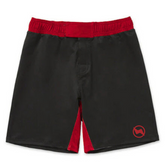BJJ & Groin Cups: Safety, Rules, and Should You Wear One?
Introduction
Brazilian Jiu-Jitsu (BJJ) is a dynamic grappling art. It is celebrated for its technical depth and close physical engagement. Yet its high-contact nature brings a focus on injury prevention, especially to sensitive areas like the groin. This comprehensive guide discusses the benefits and considerations of wearing a groin cup. It will break down safety, rules, psychology, comfort, and how to choose the right protection.
1- Understanding the Need: Why a Groin Cup in BJJ?
- Anatomical stakes: The groin is vulnerable in BJJ. It is so during scramble positions, accidental knee-to-urine contact, and during takedowns or guard passing.
- Risk vs. reality: Catastrophic injury is rare. However, even minor strikes can cause excruciating pain, downtime, or medical visits.
- Psychological toll: Injuries to groin can erode confidence and slow progress for new or returning practitioners.
- Investment in longevity: Safety gears like cups add a layer of domain-specific protection. They help to preserve an athlete's training continuity and mental assurance.
2- BJJ Rules & Regulations
Different gyms and tournaments have varying stances:
- Gi training: Typically, cups are optional. Some coaches discourage them due to Figure-4 grips, hip movement, and risk of injury from hard items.
- No-Gi / submission grappling: Cups may be more common due to higher tempo and less material protection. Still, many schools do not require them.
- Competition contexts: Most IBJJF-style and grassroots BJJ tournaments do not mandate cups. MMA events always require them. Always check the competition’s rule book (e.g., IBJJF, ADCC, etc.).
Key points:
- Check school policy: Some academies advise against hard cups; others leave it to discretion.
- Tournament regulations: Some allow soft cups or no cups; always verify well before entering.
- Liability concerns: Some gyms stress it to reduce injury risk and potential liability.
3- Pros of Wearing a Groin Cup in BJJ
a. Enhanced Physical Safety
- Absorbs unwanted impact, especially from knees, elbows, or accidental strikes during scramble.
- Guards against rare but serious injuries like testicular trauma or torsion.
b. Psychological Confidence Boost
- Wearing a cup can reduce fear of injury. Hence, enabling more aggressive training and focus on technique.
- Especially helpful for beginners, returning athletes, or anyone nursing past groin-related injuries.
c. Encourages Proper Position Management
- With protection, practitioners may be less hesitant to escape or go for submissions that leave the groin more exposed.
4- Downsides & Considerations of Wearing a Cup
a. Mobility & Comfort Constraints
- Traditional hard cups can be restrictive. Thus, interfering with guard passing, hip movement, or floating butterfly guard.
- A poorly fitted cup can shift. Thus, causing discomfort, shifting mid-roll, or even bruising from contact.
b. Increased Risk During Leglocks
- In positions like 50/50 or kneebars, a hard cup may become a hazardous "hard surface". Thus, possibly making leg submissions more dangerous for both roll partners.
c. Hygiene & Fit Concerns
- Requires snug fit. Loose cups can ride around. The added equipment also means one more item to wash or replace.
- Some gyms discourage them due to sanitation. So, layering a cup under compression shorts can help.
d. Psychological Overreliance
- Relying too heavily on protective gear might make one less cautious or less aware of proper positioning and defense.
5- Types of Groin Cups & Which to Consider
| Type | Description | Pros | Cons |
|---|---|---|---|
| Hard-shell Plastic/Metal Cup | Solid, rigid structure. | Maximum protection. | Restrictive, can shift, uncomfortable in certain positions. |
| Flexible/Soft Cup | Gel, rubber, or padded cups that conform. | More mobility, comfortable. | Less protective against very high-impact injuries. |
| Compressive Shorts with Integrated Cup Pocket | Shorts with a slot to insert a cup. | Secure fit, easier washing. | Quality varies; pocket may shift or cup still move. |
| Compression Shorts (No Cup) | Tight shorts with no hard protection. | Comfortable, modesty support. | No hard protection against impact. |
Tips for choosing:
- Test fit before rolling: Make sure it does not ride up or push in weird directions.
- Wear proper underwear/shorts: A well fitted compression short layer keeps the cup stable.
- Select based on your style: If you are mobility-intensive (like guard work), try a soft or flexible cup. If you are an aggressive takedown-heavy guy, a hard cup might make sense.
- Quality matters: A cheap plastic cup that cracks or bends offers little help and may cause more trouble. Opt for reputable sport-mens protection designed for martial arts.
6- Best Practices When Wearing a Cup in Training
- Use compression support: Always wear under compression gear that keeps the cup immobile.
- Inspect regularly: No cracks, flimsy plastic, or jagged edges.
- Clean frequently: Sweat and bacteria collect quickly. Remove, wash, and let it dry.
- Start light: Wear the cup during calm drill days then slowly transition to full-speed rolling to adjust.
- Communicate with training partners: Let them know you are wearing a cup. It will help them be more aware and respectful.
7- Myths and Misconceptions
- "A cup will fix groin injuries completely." False. It helps, but only for impact and not for groin strains, hernias, or overuse issues.
- "Cups are mandatory in BJJ." Not usually. They are optional in most schools. Compete rulebooks might specify, so always check.
- "All cups hinder movement equally." Not true. Quality and design vary. Modern soft cups are far less restrictive.
- "Only competitors need one." Beginners and casual rollers also benefit from peace of mind, especially those sensitive to any impact.
8- Alternatives to Hard Groin Cups
If you feel a hard cup just is not compatible with your flow, consider alternatives:
- Soft gel groin guards: Provide padding without rigidity. These are great for minor impact absorption.
- Groin/hip rash guards or compression shorts: Add support and modesty, plus light protection.
- Layered shorts: Some elite brands offer double or triple-layer athletic shorts. These shorts provide a buffer layer without hard components.
- Hip protectors or padded undershorts: Often used by cyclists. They can help diffuse low-impact strikes.
Each alternative offers different trade-offs in comfort, protection, and mobility.
9- Decision Tree: Should You Wear a Cup?
Are you training in gi or no-gi?
- Gi, calm academy, mostly flowing sparring → Cup optional
- No-gi, fast-paced open mats or competitions → Consider wearing one
Do you get hit in the groin regularly?
- Frequently or past incidents → Cup may restore confidence
- Rarely or not at all → Maybe skip it or try soft alternatives
Are leg locks or mobility drills a big part of your game?
- Yes → Try more flexible options or compression shorts
- No → Hard cups may offer more peace of mind
Does your gym or event require one?
- Yes → Use what’s permitted by them
- No → Evaluate personal preference and style
Do you care more about comfort or protection?
- Comfort/mobility → Lean soft cup or compression options
- Maximum protection → Choose reputable hard cup with secure fit
Conclusion
Whether to wear a groin cup in BJJ is not a one-size-fits-all decision. It depends on your training style, sensitivity, competition arenas, and priorities. Hard cups deliver robust impact defense. But they may hinder mobility. Soft cups and compression alternatives offer comfort at the cost of some protection.
The best path? Understand your school's stance and the rules of events you train for. Try different options. Prioritize proper fit and comfort. Always pair the cup (if used) with a compression garment to stabilize it and protect both you and your partners. Most importantly, choose equipment that lets you train safely, confidently, and progress freely.
For quality BJJ Gears Explore Novakik BJJ





